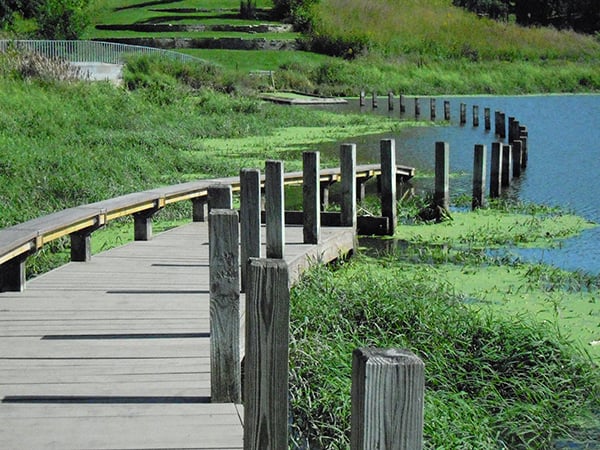
The city of Des Moines is investing in public art, having elected to spend some $800,000 to preserve Greenwood Pond: Double Site (1989–96), an urban wetland art installation by environmentally engaged artist Mary Miss.
“It was a way for people to really become familiar with what a wetland is, what it’s like, how it functions and what lives in it and grows in it,” said Miss of the project to the Des Moines Register. “I was really sad to see the state that it was in” she said about the last time she visited the city.
Des Moines will dredge Greenwood pond, which has become filled with weeds since Miss completed her project nearly 20 years ago. The Des Moines Art Center, which commissioned the work, will replace the wooden structures Miss built as places for visitors to observe and interact with the pond, which has deteriorated over the years.
The city was inspired to act by the project’s inclusion on the Cultural Landscape Foundation’s annual Landslide, a list of threatened or at-risk land-based art sites of cultural importance (see Are These 11 American Art Landscapes Worth Saving?).
Landslides’s efforts have also been successful in San Francisco, where a campaign has successfully raised $4 million to relight Leo Villareal‘s The Bay Lights after renovations to the Bay Bridge that begin next month are completed in 2016 (see Leo Villareal Saves San Francisco’s Bay Lights).
Other sites on the list have not proved as lucky: in Dallas, the Office of Cultural Affairs voted this month to de-access Frances Bagley and Tom Orr’s White Rock Lake Wildlife Water Theater, which needs some $200,000 in restorations (see Dallas to Remove Public Art Rather Than Pay to Maintain It). Though the artwork has been deemed past saving, the Lakewood/East Dallas Advocate reports that the artists may be commissioned by the city to recreate the piece.